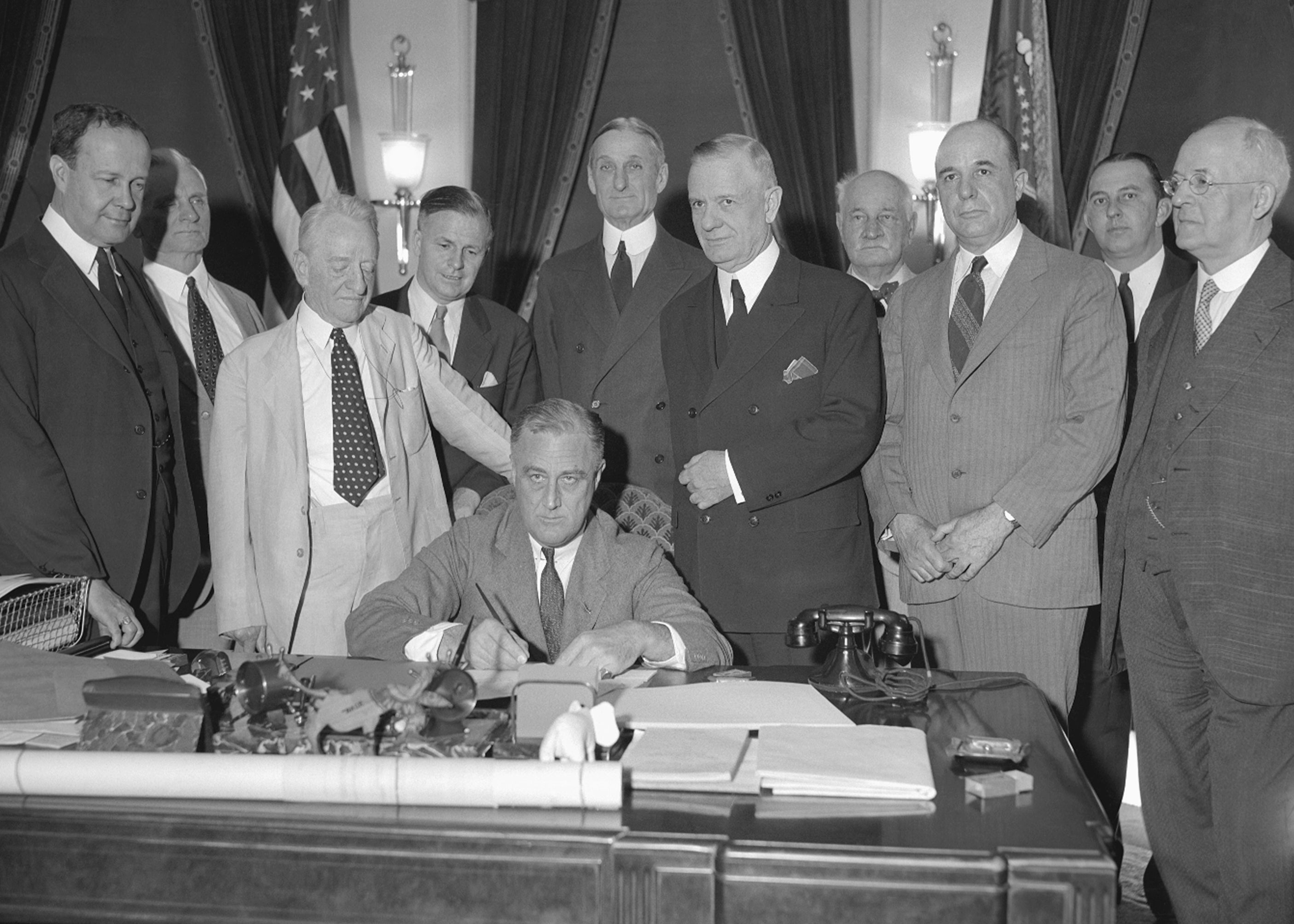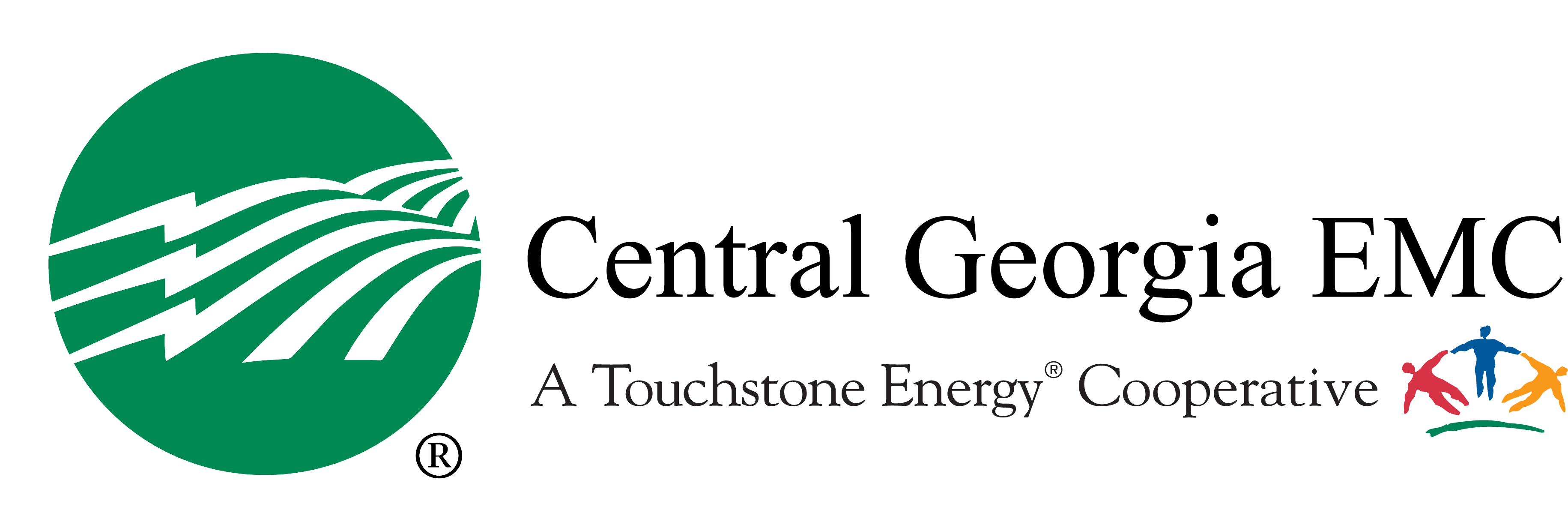History of Central Georgia Electric Membership Corporation
CGEMC is Organized
On April 10, 1937, a petition for chartering The Central Georgia Electric Membership Corporation was filed, and on June 11, 1937, the organization officially came into being. Those filing the petition for charter included: G. W. Patrick of Spalding County; M. O. McCord of Butts County; A. N. Moye of Lamar County; T. F. Freeman of Monroe County; O. D. Price of Jasper County; F. C. Newton of Morgan County; and V. G. Turner of Henry County.
First Board of Directors
At the first organizational board meeting held on June 19, 1937, F. C. Newton was elected president of the Board of Directors and M. O. McCord was employed as the co-op manager. Mr. McCord and his wife were the only two office employees until December 1937, when Miss Grace Garlington was employed as bookkeeper.. A. K. Maddox of Spalding County was the first co-op attorney.
First Lines Energized
The first loan of $202,000 was for 200 miles of line covering parts of Monroe, Spalding, Henry, Lamar, Butts, and Jasper Counties. The first section of line was energized in March 1938 and included 169 miles serving 329 consumers. The first lines were built to handle approximately 75-kilowatt hours per month per member.
Leadership Changes
M. O. McCord served as manager from June 1937 to October 1939; E. I. Carruthers from October 1939 to 1941; R. F. Armstrong from 1941 to 1981; and R. A. O’Quinn during 1982.
George L. Weaver at the Helm
George L. Weaver became general manager in 1982. He is serving in this capacity presently; however, in 2016 the title was changed to President/CEO.
The “Rural Electric Program” is the term commonly used to embrace the many segments of the non-profit cooperative industry which supplies electricity to rural areas. Sometimes called the “Rural Electrification Administration Program (currently Rural Utilities Service),” after the government agency which lends funds for rural electrification. Used in this sense, however, “RUS” is an oversimplification. The Rural Utilities Service (RUS) is a vital part of the overall rural electric program.
In the early 1930’s only the urban areas had central station electricity. The vast rural areas of America did not have access to the wonders of electricity. During this time, less than 3% of rural America received the benefits of electric service.
After Franklin D. Roosevelt became President in 1933, he used the persuasive powers of his office in an attempt to get the investor-owned electric companies to expand their services into the rural areas. When they would not do this, the President signed an executive order on May 11, 1935, creating the Rural Electrification Administration (REA). The intent of this Act and these funds was to make low-interest money available to the investor-owned companies making providing electric service throughout rural America economically feasible.
The investor-owned companies did not accept the financial encouragement of President Roosevelt; so, Senator George W. Norris of Nebraska and Congressman Sam Rayburn of Texas, introduced bills in the U. S. Congress to set up a permanent REA agency. On May 21, 1936, the President signed the Rural Electrification Administration Act. Shortly thereafter, each of these states passed legislation enabling the formation of non-profit cooperatives, so that these co-ops could apply for loan funds from REA.
The “REA Movement” spread rapidly throughout the nation. Farmers joined together, formed electric cooperatives, secured REA loan funds, obtained easements for distribution lines, and the electrification of rural America was underway. The movement has not only electrified 99% of the rural area in America, but the idea has spread and is operative in many foreign countries.
Today, RUS, as part of the U. S. Department of Agriculture is still an active and viable government agency. Loan funds are not only available to electric and telephone cooperatives to help them improve and expand services to members throughout America, but also generation and transmission cooperatives.
The “REA Movement” has proven to be one of the most exciting and fulfilling programs ever initiated. With electric energy available, the urban people, working out of the overcrowded cities, are moving into rural areas bringing with them businesses and services to meet their needs. Consequently, agriculture and industry have blended together, making rural areas a strong and vibrant economic force. Cooperatives, through the “REA Movement,” helped to make this happen


